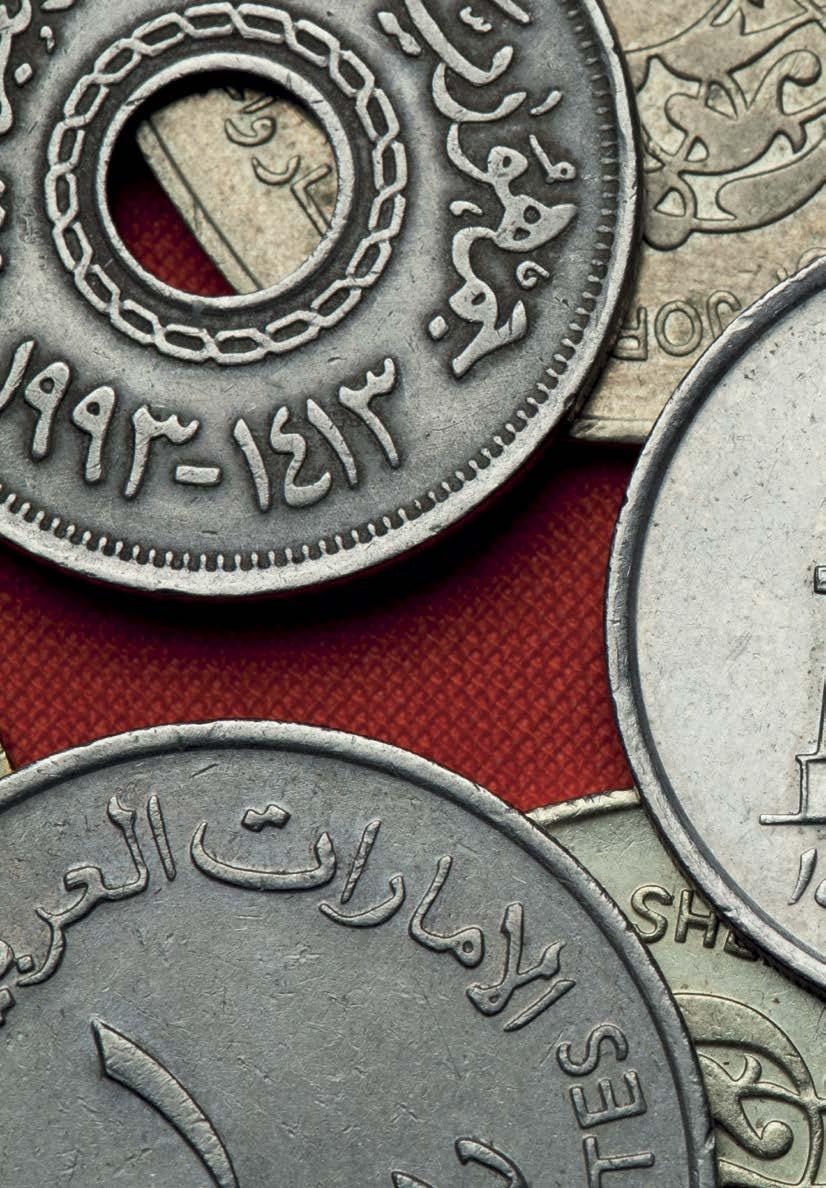
7 minute read
Islamic finance
Challenges to Islamic finance
Dr Roszaini Haniffa considers the impact which the Covid-19 pandemic may have on the future of Islamic finance.

The global financial sector has been hit by two major crises within just over a decade: the global financial crisis (GFC) of 2008 to 2009; and the global health crisis caused by Covid-19.
Financial risk falls under two types: endogenous and exogenous. Endogenous risk is the outcome of the market interactions based on the market players’ abilities, biases, prejudices and resources; while exogenous risks are shocks to the financial system from outside the system. The GFC was an endogenous risk that emerged due to the actions of market players and bankers, which led to excessive risk-taking and build-up of debt. However, the Covid-19 crisis is due to exogenous factors that have a negative impact on the real economy directly and on almost all sectors globally.
Challenges to Islamic finance
The Islamic finance industry is no exception. While it was largely unscathed by the GFC due to shariah principles that prohibit speculation and risky asset classes, it is not immune this time around. The onset of the pandemic has had far reaching consequences on businesses and employment as a result of the lockdown and strict social distancing rules.

In oil producing jurisdictions offering Islamic finance, the industry faced further shock from the plummeting oil price and suspension of infrastructure projects. The plunge in global economic growth and the continuing uncertainty as to when the pandemic will end will no doubt pose a challenge on the Islamic finance industry’s profitability, liquidity, asset quality and capital, just like their conventional counterparts.
Hence, there is urgency for the industry leadership to take swift action and not to be complacent in addressing those challenges and the following critical issues: ● the effects of a prolonged economic collapse on the structural stability of Islamic financial institutions; ● the ability to sustain supporting moratorium, deferment of loan repayments and other support measures; ● the disruption of further digital transformation on the business model; and ● the identification of social finance areas that can be optimised to steer the industry forward.

A balance-sheet approach is a good starting point in identifying clues signalling the future trajectory of Islamic banking. The quality of lending capacity, liquidity position, operational efficiency and strength of equity capital signal the buffer that the bank possesses in fighting adverse economic conditions. The asset-side of Islamic banks reflect the range of financing: ● debt-based products: such as ijarah (leasing), murabahah (mark-up), istisna (cash advance for manufacturing assets) and salam (cash advance for agriculture); ● equity-like products: such as musharakah (profit-sharing); and ● fee-based products: such as waqalah and hawalah (bank transfer services) and wadiah (safe custody services).
High risk customers
Islamic banks with a significant proportion of debt-like instruments – and which have a significant market share related to microfinancing and lending to SMEs – may anticipate involuntary default incidences if the borrowers’ financial conditions continue to deteriorate beyond the short-term relief measure of moratorium and deferred payment. This is a critical issue because, unlike their conventional counterparts which can charge interest on deferred payment, shariah committees in some jurisdictions do not allow Islamic banks to rollover loans or to charge penalties on late payment as their income.
Islamic banks should therefore reassess the risk profiles of their customers by classifying customers who are impacted by Covid-19 as high risk, and design strategies to support them guided by the Islamic ethical principles of rahmah, ihsan, ‘adl, and hikmah (compassion, benevolence, justice and wisdom). The shariah committees need to reiterate those sentiments to Islamic financial institutions in supporting the most affected customers and economic sectors. Failure to address this aspect would increase their reputational risk if customers believe their efforts were insufficient.
Similarly, Islamic banks with a high proportion of financing facilities in the areas of transportation and construction are also likely to have substantial asset quality deterioration. It is therefore important to diversify financing capability into other sectors – especially health, agriculture and food – to reduce their asset quality risk. Fee-based services offered by Islamic banks, such as fees/commissions for providing bank transfer services (outside the country), commissions for issuing Islamic credits, and safe custody services, will see a drop as customers’ spending in retail falls and investors choose to hold on to their cash.
A time for action
On the liability side, most Islamic banks are largely funded by profit-sharing investment accounts (PSIA) comprising investment accounts of customers and interbank deposits, with the rest being sukuk issues (see below), non-remunerative funding such as wadiah (current account), and remunerative funds such as murabahah (fixed term deposits).
During a time of crisis, it is important for banks to take proactive action in assuring depositors that there is no shortage of liquidity and that their deposits are safe. If depositors start to withdraw their savings and cause irrational panic, this will leave the banks with liquidity crunch.

©Getty images/iStockphoto
Besides the asset-liability challenge, some banks within the Islamic banking market may also face competitive pressures caused by accelerating trends in digitisation, which they will need to address simultaneously. The recommendation by the World Health Organisation (WHO) in April 2020 (see bit.ly/3lhxdq1) to use contactless payments means that Islamic banks need to invest in digital technologies to adapt to the changes in market reality.
Compared with standalone Islamic banks, Islamic windows are be in a relatively better position when it comes to adopting new technology, as they can leverage on their parent banks’ infrastructure. This also means that Islamic windows will be able to integrate their existing Islamic financing products, with minimal additional effort, to automate processes and to deliver services “at speed” to the market when compared to standalone Islamic banks.
The pandemic also generates opportunities for Islamic banks to provide financing to the business start-up segment by initiating capacity building platforms to support SMEs in the Halal and IR 4.0 and Digitalisation sectors, which would place them in good stead in the post-Covid-19 era.
The Islamic capital market
Turning to the Islamic capital market, the second most significant component of the Islamic finance sector, a significant chunk of the outstanding sukuk (Islamic bonds) is concentrated with sovereigns and financial institutions, with the rest being corporate sukuk. The impact of the pandemic on sovereign sukuk market is expected to be less intense and in a worst-case scenario, sovereign issuers are more likely to redeem their sukuk through central banks. Similarly, the effect on sukuk issued by financial institutions is also not worrying as most of the issues have maturities close to perpetuity.
As for corporate sukuk, it is assuring to find the maturity structure tilted towards longer term with about 15% of sector-wise corporate sukuk maturing in 2021 and 2022. However, for corporate sukuk in the oil and gas, airlines and hospitality sectors, a considerable number will be maturing within the next nine to 36 months and there are concerns on whether those issuers under liquidity stress will be able to secure refinancing.
Even if they manage to refinance, lenders may increase the cost of funding and require additional collateral to mitigate the risk. With regards to the equity capital market, the outlook is promising. Early indications suggest that Islamic equity indices (IEIs) are following a market-based approach for screening, and outperforming their corresponding benchmark equity indices (BEIs) on nominal as well as on risk-adjusted basis (Sharpe ratio) irrespective of regional differences (Ashraf et al., 2020, see https://ssrn.com/abstract=3611898).
All is not doom and gloom for Islamic finance in treading into the future. In fact, the Covid-19 crisis provides the golden opportunity for Islamic finance to shift from credit-based to equitybased financing, which will be one step nearer to the “genuine” model of Islamic finance. Fintech applications will become more popular and grow in size and Islamic finance should jump on the bandwagon to stay relevant. ●
Author bio:
Dr Roszaini Haniffa is Professor of Accountancy at Heriot-Watt University, Edinburgh. The global financial sector has been hit by two major crises within just over a decade: the global financial crisis (GFC) of 2008 to 2009; and the global health crisis caused by Covid-19.










